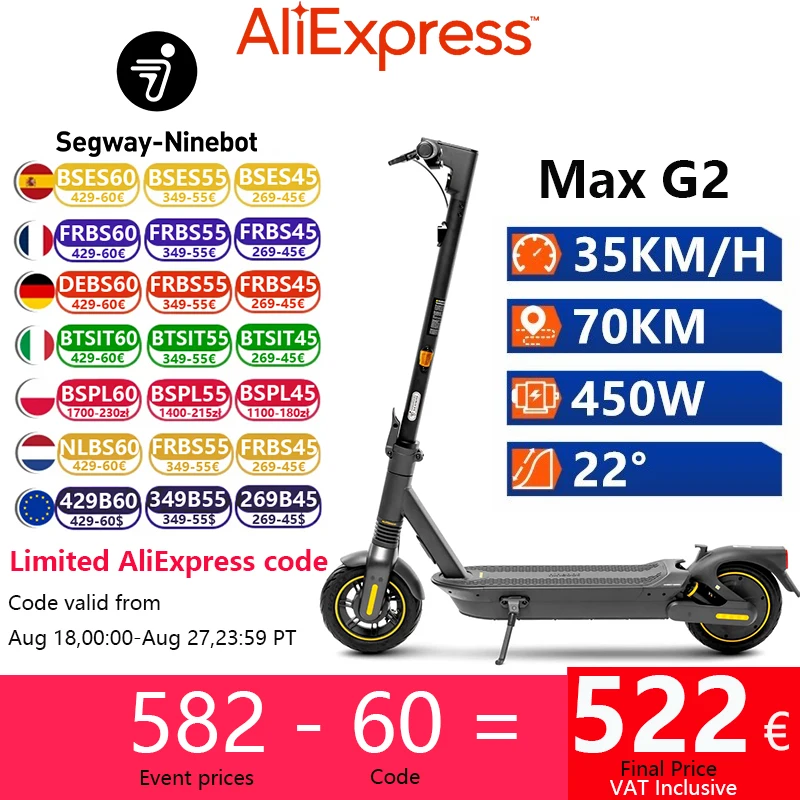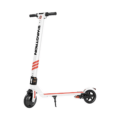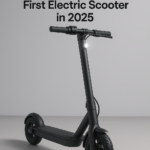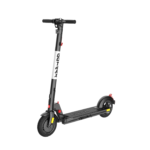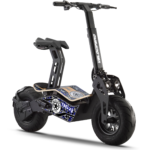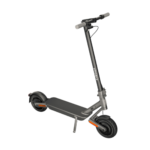- Home
- Scooters
- Compare Scooters
- Xiaomi 4 Ultra vs Segway MAX G2: Which One Rules the City?
Xiaomi 4 Ultra vs Segway MAX G2: Which One Rules the City?
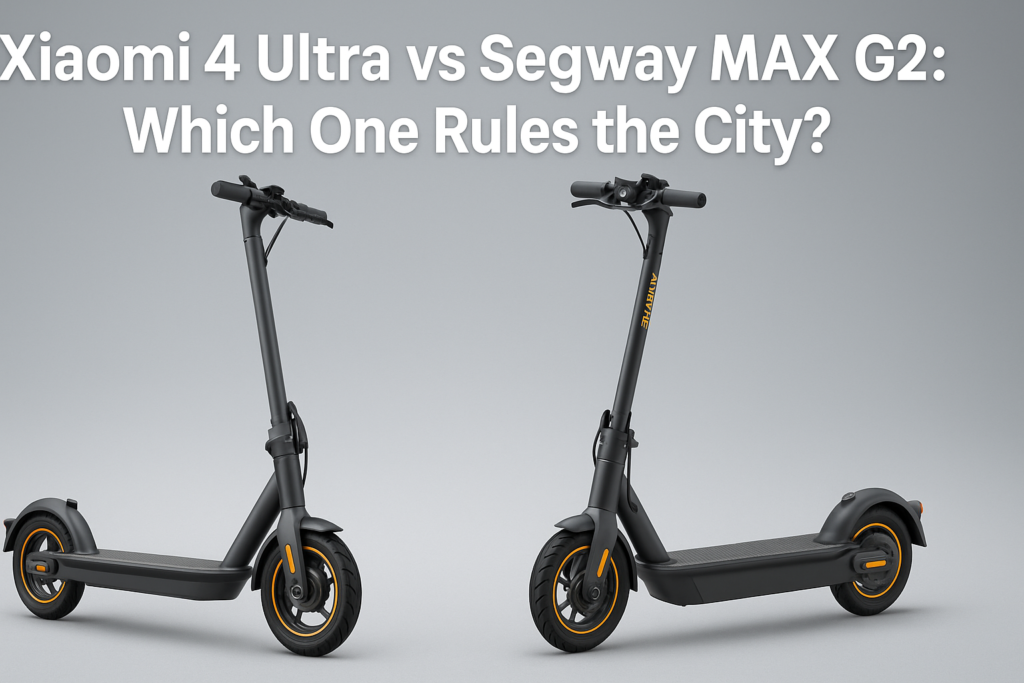
Short answer: If you want plush comfort, sleek looks, and great value, the Xiaomi 4 Ultra is a brilliant daily companion. If you prefer stronger punch off the line, extra safety tech, and a “built-like-a-tank” vibe, the Segway Ninebot MAX G2 earns the crown. In this long-form guide, we compare every detail that matters for urban riding so you can pick the winner for your commute.
City riding is unforgiving. Streets change from smooth asphalt to cracked concrete in a blink. Traffic stops and starts. Curbs, wet leaves, tram rails, and cobblestones add surprise after surprise. Because of this, you need an e-scooter that rides comfortably, brakes predictably, and keeps a steady line even when the surface gets messy. That’s the real test behind Xiaomi 4 Ultra vs Segway MAX G2. Below you’ll find a practical, data-driven comparison that focuses on real urban needs: stability, range, portability, and total ownership costs. Let’s dive in.
TL;DR Comparison
- Choose Xiaomi 4 Ultra if you want extra ride comfort, a slimmer design, and excellent value for money.
- Choose Segway MAX G2 if you want stronger torque, traction control confidence, and slightly more “pro-grade” road manners.
Quick Specs Comparison
Note: Top speed in many regions is electronically limited to ~25 km/h for road legality. Real-world range depends on rider weight, temperature, wind, terrain, and mode.
| Spec | Xiaomi Electric Scooter 4 Ultra | Segway Ninebot MAX G2 |
|---|---|---|
| Motor (nominal / peak) | ≈500 W / up to ≈940 W | ≈450 W / up to ≈1000 W |
| Top Speed (regulated markets) | ~25 km/h | ~25 km/h |
| Range (claimed) | Up to ~70 km | Up to ~70 km |
| Battery | ≈561 Wh | ≈551 Wh |
| Suspension | Dual (front & rear) | Dual (hydraulic front, spring rear) |
| Tires | 10″ tubeless, self-sealing | 10″ pneumatic (tubeless) |
| Brakes | Front drum + rear e-ABS | Front drum + rear electronic (regen) |
| Traction Control | — | Yes (DTC) |
| Weight | ~24.5 kg | ~24.3 kg |
| Folding | Quick, compact profile | Quick, slightly bulkier frame |
Design & Build: Slim Elegance vs Rugged Practicality
Design shapes how a scooter feels before you even ride it. It also affects portability, storage, and how tired your arms feel after carrying it up a flight of stairs. Here, the two rivals have distinct personalities.
Xiaomi 4 Ultra: Minimalist and City-Friendly
The Xiaomi 4 Ultra follows Xiaomi’s familiar design language: clean lines, matte finishes, and a slim silhouette. The frame looks tidy around the stem and folding latch, so nothing feels clunky. Because of this, the scooter slides into narrow spaces—under desks, behind doors, and next to café tables—without fuss. The deck is straightforward and long enough for staggered stance. The latch locks solidly and releases quickly, which helps when you hop on public transport.
Segway MAX G2: Sturdy and Confident
The MAX G2 appears tougher from every angle. The deck is chunkier, the handlebar area is wider, and the stance looks planted. You notice the purposeful look right away. That bulk signals durability. It also brings a small portability trade-off, because the scooter feels a bit larger when you carry it. On the flip side, the cockpit layout gives you a broader grip and a very stable steering feel at speed.
Verdict: If you prize sleek aesthetics and tighter storage, Xiaomi looks and handles like a modern commuter tool. If you want a “no-nonsense” workhorse you can push hard, the MAX G2’s design inspires trust.
Power, Acceleration & Hills: The Daily Punch Test
Urban riding is stop-and-go. You pull away from lights, slot into gaps, and climb short hills. Strong, predictable acceleration matters more than raw top speed in most cities.
Xiaomi 4 Ultra delivers smooth, linear take-off. It balances efficiency with comfort, so the front end stays composed when you roll on the throttle. You can choose gentle modes for crowded sidewalks and sportier modes for open bike lanes. On moderate hills, it keeps a steady pace without drama, especially if you keep momentum.
Segway MAX G2 hits a little harder. It feels punchier off the line and a touch more relentless on steeper sections. Riders who carry a backpack, groceries, or a laptop bag will appreciate the extra torque. You still get refined control, yet the scooter answers faster when you ask for speed.
Verdict: Both perform well in real traffic. The MAX G2 has the torque advantage. The Xiaomi prioritizes smoothness, which many riders prefer for control and battery economy.
Top Speed & City Legality
Most European cities cap e-scooters at ~25 km/h. Both models comply out of the box. On private property or in markets without strict limits, both chassis feel stable enough for higher speeds; however, you should follow local laws and keep safety first. In real commuting, acceleration and braking matter far more than a few extra km/h at the top.
Range & Battery Behavior: What You Actually Get
Manufacturers publish best-case ranges. Real-world results vary with rider weight, ambient temperature, tire pressure, hills, headwinds, and mode choice.
- Xiaomi 4 Ultra: Expect roughly 45–55 km on mixed urban routes when you ride smart—smooth throttle, timely braking, and sensible speeds.
- Segway MAX G2: Expect a similar 50–55 km for most riders under comparable conditions. Segway’s battery management aims to keep output consistent as the pack drains.
Charging times are also close. Factor in 6–6.5 hours for a full refill from near empty. If you top up during work hours, you can cut charging sessions and preserve battery health. Keep tires at proper pressure and avoid harsh sprints if you want the longest possible range per charge.
Ride Comfort & Suspension: Float vs Firm
Comfort defines whether you arrive fresh or fatigued. It also affects confidence when the surface gets sketchy.
Xiaomi 4 Ultra: Plush, Cushioned Feel
The Xiaomi’s dual suspension absorbs chatter, cracks, and small potholes with ease. Paired with 10″ tubeless, self-sealing tires, the setup damps vibrations before they reach your knees and wrists. On cobblestones or brick walkways, the deck remains composed, so you can keep your line without white-knuckling the bars.
Segway MAX G2: Planted and Precise
The MAX G2 uses a hydraulic front and spring rear combination. The ride feels firmer, yet still comfortable. That firmness helps the scooter stay flat in quick turns and during heavy braking. Because of the stouter cockpit and traction control, the G2 inspires confidence on wet patches or dusty corners.
Verdict: Xiaomi favors cushion and comfort. Segway favors control and stability. Both absorb urban chaos well; your preference decides the winner.
Braking & Control: Predictable Stops Win Commutes
Good brakes build trust. In the city, you must react to cars turning, doors opening, and pedestrians stepping out unexpectedly. Both scooters use a front drum plus rear electronic braking. The difference lies in tuning and traction support.
Xiaomi 4 Ultra brakes feel smooth and progressive. The drum system is low-maintenance and consistent in all weather. Electronic ABS helps prevent rear-wheel lock during panic stops. The lever feel is friendly, which makes controlled braking easy for new riders.
Segway MAX G2 adds Dynamic Traction Control (DTC). This system helps modulate power delivery and grip on slippery surfaces. In a straight-line stop, the hardware setup feels very similar to Xiaomi’s. When the road is wet or dusty, the extra traction logic adds a small layer of confidence as you manage speed and steering.
Verdict: Both stop confidently. The Segway’s traction control gives it a slight edge in adverse conditions.
Tires & Urban Terrain
Ten-inch pneumatic or tubeless tires are the current sweet spot for city scooters. They roll over cracks better than 8.5″ wheels and keep steering light compared with huge 11″ tires.
- Xiaomi 4 Ultra: Tubeless, self-sealing design helps prevent flats from small punctures. This saves money and downtime.
- Segway MAX G2: High-quality pneumatic tires with strong sidewalls deliver grip and feedback. Keep them properly inflated and they shrug off most urban abuse.
For both scooters, check pressure weekly. Under-inflation invites flats and robs range. Over-inflation reduces comfort and grip. Aim for the manufacturer’s middle recommendation and adjust slightly for your weight and road feel.
Portability, Folding & Storage
Even powerful scooters need to live in the real world—hallways, elevators, and busy train platforms. Both models fold quickly and lock securely, yet the frames feel different.
- Xiaomi 4 Ultra: The slimmer profile makes it easier to thread through doors and tight stairwells. When folded, the scooter rests neatly against a wall.
- Segway MAX G2: The larger cockpit and beefier deck add volume. You can still carry it, but it feels chunkier. The trade-off is excellent stability on the road.
Verdict: Weight is nearly the same. The Xiaomi’s shape helps more in cramped spaces, while the Segway’s size pays dividends while riding.
Dashboard, Lights & App Features
Modern scooters act like smart devices. You expect clear displays, easy mode control, and useful app features.
Xiaomi 4 Ultra: Essentials Done Right
The center display is crisp and readable. You switch modes quickly and check speed, battery, and lights at a glance. The companion app lets you lock the motor, update firmware, review ride stats, and tweak preferences. It covers all daily needs without clutter.
Segway MAX G2: Deeper Customization
Segway’s app goes a step further. You get detailed battery info, ride logs, and anti-theft options, plus fine-grained control over some ride parameters. The interface feels polished and reliable. If you enjoy data and tuning, you’ll appreciate the extra depth.
Lighting: Both scooters provide bright headlights and practical rear lamps. For night riding, consider adding a helmet light and a small bar-mounted flasher. Redundancy helps cars see you sooner.
Weather Readiness & Daily Toughness
Rain happens. Puddles appear. While both scooters are built for everyday use and offer splash resistance, you should avoid deep water, pressure washers, and long rides in heavy rain. Wipe the scooter dry after wet trips, lube moving parts as needed, and re-charge at room temperature. Store batteries away from extreme heat and cold to preserve capacity over time.
Maintenance & Running Costs
Owning an e-scooter is cheaper than running a car or even many e-bikes, especially when you handle basic care at home. Fortunately, both the Xiaomi 4 Ultra and the MAX G2 keep maintenance simple.
- Tires: Keep pressure in spec and inspect the tread every few weeks. Replace when bald or badly punctured.
- Brakes: Drum systems are durable and low-mess. If the lever travel increases, adjust or service the mechanism.
- Bolts & Hinges: Check the stem clamp and deck fasteners monthly. A quick tighten prevents creaks and wobble.
- Battery: Avoid storing fully empty or 100% for weeks. For long breaks, leave 40–60% charge and store cool and dry.
- Cleaning: Use a damp cloth and mild soap. Skip hose jets. Keep connectors dry.
Because both scooters use reliable components and conservative power levels, consumables last well when you ride smoothly. Self-sealing tire tech on the Xiaomi can reduce flat repair costs. Segway’s robust hardware and traction control can reduce crash-related wear. Either way, smooth inputs save parts and electricity.
Security, Locks & Theft Prevention
City riding includes city theft risk. Use layered security whenever you park outside.
- Digital Lock: Lock the motor in the app. It deters casual push-aways.
- Physical Lock: Use a hardened U-lock or a quality folding lock through the deck or a dedicated anchor point.
- Alarm/Tracker: Consider a discreet motion alarm or GPS tracker hidden in the stem or deck cavity.
- Parking Choices: Choose visible, camera-covered spots and avoid overnight street parking.
Both apps support basic anti-theft steps. A good physical lock remains essential in busy city centers.
Use-Case Deep Dive: Who Wins Each Scenario?
Short, Frequent Errands (1–5 km round trips)
You want instant comfort and easy parking. The Xiaomi’s cushy ride and slim frame make quick errands pleasant. It excels at weaving gently through calm streets and bike paths. The Segway also works well, yet its bigger cockpit shines more when rides get longer or faster.
Medium Commutes (6–15 km daily)
Range is a non-issue for both. Here, your preference leads. If you love a plush glide, Xiaomi is hard to beat. If your route includes strong headwinds, long hills, or slick patches, the Segway’s extra torque and traction logic reduce stress and keep pace steady.
Long Cross-Town Runs (16–30 km)
Comfort, efficiency, and stability matter most. The Xiaomi keeps fatigue low with excellent suspension. The Segway feels unflappable at cruise and holds a line beautifully when the surface is mixed. Since both can cover the distance, choose cushion (Xiaomi) or planted feel (Segway).
Mixed Transport (Scooter + Metro/Bus)
Both fold fast, but the Xiaomi’s slimmer folded profile makes it easier to carry through turnstiles and into elevators. If your routine includes multiple station changes, that shape advantage adds up quickly.
Heavier Riders or Cargo Backpacks
The Segway’s stronger torque delivery feels reassuring with extra mass or steep climbs. The Xiaomi still handles it, yet the G2 pulls a bit more decisively from low speed.
Comfort Details That Matter Daily
- Deck Space: Both allow a natural staggered stance. The MAX G2’s broader cockpit opens your shoulders and relaxes wrists at speed.
- Grips & Reach: Wider bars on the Segway feel great for taller riders. Xiaomi’s bars are compact and nimble in tight spaces.
- Noise & Vibration: Xiaomi’s softer damping filters chatter slightly more. Segway’s firmer tune feeds useful road feel through the bars.
- Headlight Aim: Set light angle so the beam hits the road ~10–15 m ahead. Both lights are good; proper aim makes them excellent.
Accessories & Customization
Small add-ons transform daily comfort and safety.
- Phone Mount: Keep maps visible; avoid holding phones while moving.
- Helmet Light: A bar-level headlight plus a helmet-level beam improves visibility to drivers.
- Rear Rack or Strap Hooks: Secure bags safely so they never tangle with the wheel.
- Kickstand Foot: A larger foot prevents sinking into hot asphalt or soft ground.
- Secondary Lock Bracket: Mount a lock so you always carry it.
Both ecosystems offer plenty of third-party options. Because the MAX series has been popular for years, Segway enjoys a huge accessories market. Xiaomi’s ecosystem is also vibrant, with many compatible mounts, bags, and spare parts.
Ownership Experience & Reliability
Reliable scooters keep you riding, not wrenching. Both brands have mature product lines and solid quality control. They tune power so motors and electronics don’t run at the ragged edge. Batteries in this Wh class also last well when you avoid chronic deep discharges or heat exposure.
Plan light, scheduled care: check fasteners monthly, clean the folding latch, keep tires healthy, and update firmware. If you respect the basics, both the Xiaomi 4 Ultra and the MAX G2 should deliver years of dependable commuting.
City Safety & Local Laws (General Guidance)
Laws vary by country and city. Many European cities require lights, a bell, and a speed limit around 25 km/h. Some cities restrict sidewalks and require bike lanes or road shoulders. Because rules change, always verify your local regulations before riding. Regardless of the law, wear a helmet, signal before turning, and slow down near pedestrians. Ride predictably; drivers notice consistency more than speed.
Battery Care & Winter Tips
- Store the scooter indoors when temperatures drop below freezing.
- Expect less range in cold weather; lithium cells deliver fewer amps when cold.
- Warm the scooter indoors before charging in winter.
- Wipe down after salted roads to protect metal parts.
Cost of Ownership & Resale
Electricity costs per 100 km are tiny compared with fuel. Tires and brake parts last long when you ride smoothly. Because both models are well known, resale demand is strong. Keep service receipts and the original charger to maximize resale value later.
Which One Fits Your Rider Profile?
Pick the Xiaomi 4 Ultra if you:
- Prioritize comfort on mixed surfaces and cobblestones.
- Prefer a sleek, compact folded shape for mixed transport.
- Want great value with a plush ride feel.
- Like smooth, linear power delivery.
Pick the Segway MAX G2 if you:
- Want extra torque for hills, cargo, or heavier riders.
- Ride in wet or dusty conditions and value traction control.
- Prefer a planted, precise chassis at cruising speed.
- Enjoy deeper app features and tuning options.
FAQs
Is 25 km/h fast enough for city riding?
Yes. In dense areas, steady acceleration, smart positioning, and strong brakes matter more than top speed. Both scooters excel in those areas.
Which has better range in real life?
They are very close. Expect ~45–55 km for most riders. Terrain, temperature, and riding style shift results more than the spec sheet.
Which one is easier to carry?
Weights are similar, but the Xiaomi’s slimmer shape makes tight stairwells and turnstiles a bit easier.
Which one is safer in the rain?
Both are splash-resistant and handle showers fine at reduced speeds. The MAX G2’s traction control adds a small confidence bump on slick patches. Ride cautiously, extend braking distance, and avoid deep puddles on either model.
Which one is more comfortable?
Xiaomi leans softer and cushier. Segway feels firmer and more controlled. Pick the feel you enjoy more.
Final Verdict: So, Which One Rules the City?
The honest answer depends on your streets, your body, and your habits. Yet the pattern is clear:
- Xiaomi 4 Ultra rules if you want maximum comfort, tidy portability, and excellent value. It smooths rough pavement, slips into small spaces, and keeps your daily rides relaxed.
- Segway MAX G2 rules if you want more torque, added traction smarts, and a planted, pro-grade feel. It digs into climbs, shrugs off gusty stretches, and holds a line with authority.
For many city riders, Xiaomi 4 Ultra is the best choice because comfort and convenience win most commutes. For power-focused riders who face slick corners, steeper hills, or heavier daily loads, the Segway MAX G2 earns its premium. Either way, you end up with a capable, modern scooter that makes short work of urban miles.
Pros & Cons at a Glance
Xiaomi 4 Ultra – Pros
- Plush dual-suspension comfort
- Slim, commuter-friendly folded shape
- Self-sealing tubeless tires reduce flats
- Smooth, predictable power delivery
- Excellent value for money
Xiaomi 4 Ultra – Cons
- Less punch off the line than MAX G2
- Top speed limited by local regulations (as with MAX G2)
Segway Ninebot MAX G2 – Pros
- Stronger launch and hill performance
- Dynamic Traction Control adds confidence on slick surfaces
- Stable, planted chassis at cruise
- Deep, polished app features
- Durable, “workhorse” build vibe
Segway Ninebot MAX G2 – Cons
- Slightly bulkier feel when carried
- Often priced higher than Xiaomi
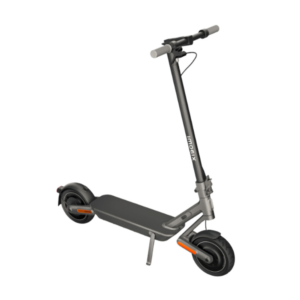 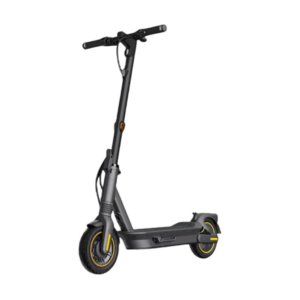 | |
| Price | |
| Our Rating | |
| Brand | XiaomiSegway |
| Category | Electric ScootersElectric Scooters |
General
| Model The Model specifies the exact version or name of the scooter. It helps identify its unique design, features, and specifications within the manufacturer’s product line. Knowing the model makes it easier to compare options, find compatible accessories, or look up support information. | Electric Scooter 4 UltraNinebot MAX G2 |
| Brand The Brand identifies the manufacturer or company that designs and produces the scooter. A trusted brand is a sign of quality, reliability, and good customer support. Well-known brands often have higher standards for safety, performance, and after-sales service, giving you more confidence in your purchase. | XiaomiSegway |
| Release Date The Release Date indicates when the scooter model was officially launched on the market. This helps you know how current the design, technology, and features are. A newer release date often means updated components, improved performance, and the latest safety or smart features. | 01 January 202301 January 2023 |
| Recommended Age Recommended Age indicates the minimum age range that the scooter is designed for, based on safety, size, and ease of use. Following the recommended age helps ensure that riders can handle the scooter’s speed, weight, and controls comfortably and safely. Always check local laws and use protective gear, especially for younger riders. | 16+ years14+ |
Performance & Power
| Motor Power (Wattage) What it means: The motor power, measured in watts (W), shows how strong the scooter’s electric motor is. Why it matters: Higher wattage usually means better acceleration, more torque, and improved performance on hills or rough terrain. For example, a 250W motor is good for flat city roads and light riders, while a 500W or 1000W motor provides more power for faster speeds or climbing steep inclines. | 500 W rated, up to 940 W peak450 W nominal, 900–1000 W peak |
| Top Speed The Top Speed indicates the maximum speed that the scooter can reach under optimal conditions. It’s usually measured on level ground with a fully charged battery and an average rider weight. A higher top speed allows you to travel longer distances faster, but always ensure you ride within legal speed limits and your personal comfort zone for safety. | 25 km/h (15.5 mph, capped to meet EU/UK regulations)Up to 22 mph (25 km/h) |
| Battery Capacity Battery Capacity refers to the total amount of energy the scooter’s battery can store, usually measured in ampere-hours (Ah) or watt-hours (Wh). A higher battery capacity means you can ride longer distances on a single charge, reducing the need for frequent recharging. Keep in mind that actual range can vary depending on rider weight, terrain, speed, and weather conditions. | 561.5 Wh (36V 15.6Ah lithium-ion)36 V, 15.3 Ah (551 Wh) |
| Estimated Range per Charge The Estimated Range per Charge indicates the average distance the scooter can travel on a single full battery charge. This range is calculated under optimal conditions, such as flat terrain, moderate speed, and average rider weight. Real-world range may vary depending on riding style, terrain, weather, and load. A longer range means fewer recharges and greater freedom for longer trips. | Up to 70 km claimed; real-world ~50–60 km depending on terrain and rider weightUp to 43 miles (70 km theoretical, ~25 miles at max speed) |
| Hill Climb Ability Hill Climb Ability describes the maximum incline or slope that the scooter can handle while maintaining stable performance. It’s typically expressed as a percentage or in degrees. A higher hill climb rating means the scooter can tackle steeper hills without losing too much speed or power. Actual climbing performance may vary based on rider weight, battery charge, and terrain conditions. | Up to 25% inclinesUp to 22% incline |
| Drive System The Drive System refers to how power from the motor is delivered to the wheels. Electric scooters typically use either a hub motor (directly integrated into the wheel) or a chain/belt drive system. A high-quality drive system ensures smooth acceleration, efficient power transfer, and low maintenance. The choice of drive system affects performance, noise level, and overall ride experience. | Rear-wheel hub motor with sine wave FOC controllerRear-wheel hub motor |
Charging & Electrical
| Charging Time Charging Time indicates how long it takes to fully recharge the scooter’s battery from empty to 100% using the standard charger provided. Faster charging means less downtime and more time on the road. Actual charging time may vary slightly depending on battery capacity, charger output, and environmental conditions. | ~6.5 hours (standard charger)Approx. 5–6 hours |
| Battery Type Battery Type refers to the specific technology used in the scooter’s battery, which affects performance, lifespan, weight, and charging time. Most modern electric scooters use high-quality lithium-ion (Li-ion) batteries because they offer a good balance of energy density, durability, and low maintenance. A reliable battery type ensures consistent power delivery and longer riding ranges. | High-density lithium-ion with Smart BMS (short-circuit, overcharge, and temperature protection)Lithium-ion with smart BMS |
| Removable Battery A Removable Battery means the battery pack can be easily detached from the scooter for convenient charging and replacement. This feature allows you to charge the battery separately, swap it with a spare for extended range, or securely store it indoors in extreme weather. Removable batteries add flexibility and make it easier to keep your scooter powered up wherever you are. | NoNo |
| Regenerative Braking Regenerative Braking is an energy-saving feature that converts some of the energy normally lost during braking back into battery power. When you slow down or brake, the motor works in reverse to generate electricity, which helps extend the scooter’s range and improves overall efficiency. This system also reduces wear on traditional brake components, leading to lower maintenance over time. | YesYes |
| Lighting Lighting refers to the built-in front and rear lights that enhance visibility and safety when riding in low-light conditions or at night. Good lighting helps you see the road ahead and ensures that other road users can see you. Many scooters include LED headlights, taillights, and sometimes brake lights or side reflectors for added safety and compliance with local traffic regulations. | Ultra-bright 3W LED headlight, rear LED brake light, side reflectorsFront LED headlight, rear LED taillight, integrated turn signals |
Build & Dimensions
| Scooter Weight Scooter Weight refers to the total weight of the scooter when fully assembled, including the battery. This affects how easy it is to carry, lift, and store the scooter when not in use. A lighter scooter is more portable and convenient for commuting, especially if you need to carry it upstairs or onto public transport. Keep in mind that a sturdy frame and quality components may add to the weight but also contribute to better durability and ride stability. | ~24.5 kg (54 lb)Approx. 53.5 lb (24.3 kg) |
| Maximum Rider Weight Maximum Rider Weight indicates the highest rider weight that the scooter is designed to safely support while maintaining optimal performance and stability. Staying within this limit helps ensure reliable acceleration, braking, and climbing ability, and it protects the frame, suspension, and motor from excessive strain. Exceeding the recommended limit may reduce performance and increase wear on components. | 120 kg (265 lb)265 lb (120 kg) |
| Deck Size Deck Size refers to the dimensions of the scooter’s standing platform. A wider and longer deck provides more foot space, allowing you to stand comfortably and adjust your stance while riding. A well-sized deck improves balance and stability, especially on longer rides or at higher speeds. Compact decks, on the other hand, help keep the scooter lightweight and portable. | Wide and extended anti-slip platform (~200 mm width)180 mm wide footboard, non-slip finish |
| Handlebar Height Handlebar Height refers to the distance from the deck to the handlebars, which affects your riding posture and comfort. An appropriate handlebar height helps you maintain good balance, reduces strain on your back and arms, and makes steering more comfortable. Some scooters have adjustable handlebars to fit riders of different heights, while others have a fixed height for a streamlined design. | Fixed ergonomic bar with comfort gripsApprox. 40.9″ from deck |
| Folding Mechanism The Folding Mechanism describes how easily and securely the scooter can be folded for carrying and storage. A well-designed folding system lets you quickly collapse the scooter into a compact size, making it convenient to transport on public transit, store under a desk, or fit into a car trunk. Look for sturdy latches and safety locks to ensure the scooter stays firmly in place when folded or unfolded. | YesYes |
| Dimensions Folded Dimensions indicate the size of the scooter when it’s fully folded. This measurement shows how much space the scooter will take up when stored or carried, making it easier to check if it will fit in your car trunk, under a desk, or in a closet. Compact folded dimensions are ideal for commuters who need to bring their scooter on public transport or store it in tight spaces. | Compact length with flat bar profile for easier storage1210 × 570 × 605 mm |
| Material Material refers to the primary construction materials used for the scooter’s frame and key components. High-quality materials like aircraft-grade aluminum, reinforced steel, or durable composites provide strength, stability, and a lighter overall weight. A sturdy material ensures the scooter can handle daily wear and tear while maintaining safety and performance. | Aerospace-grade aluminum alloyHigh‑strength steel frame |
Safety & Control
| Brake Type(s) Brake Type(s) describe the braking systems the scooter uses to help you slow down or stop safely. Common brake types include mechanical brakes (like drum or disc brakes), electronic brakes, and foot brakes. Many scooters combine multiple braking systems for added safety and shorter stopping distances. The type and quality of brakes affect your control, especially when riding at higher speeds or on slopes. | Dual system: regenerative electronic front brake + rear disc brakeFront drum brake + rear electronic brake (E‑ABS) |
| Suspension Suspension refers to the system that absorbs shocks and vibrations while riding, providing a smoother and more comfortable ride over uneven or rough surfaces. Scooters may have front suspension, rear suspension, or dual suspension for better shock absorption and stability. Good suspension helps reduce rider fatigue and improves control, especially when riding on bumpy roads or off-road paths. | Dual suspension system: front hydraulic + rear double springHydraulic front suspension and rear dual spring suspension |
| Tire Type Tire Type refers to the kind of tires the scooter uses, which directly affects ride comfort, traction, and maintenance. Common types include solid (airless) tires, pneumatic (air-filled) tires, or hybrid options. Pneumatic tires offer better shock absorption and a smoother ride on rough surfaces, while solid tires are puncture-proof and require less upkeep. The right tire type helps ensure safe handling and a comfortable ride in different conditions. | 10″ self-sealing tubeless Xiaomi DuraGel tires10″ self-sealing tubeless pneumatic tires with jelly layer |
| Tire Size Tire Size indicates the diameter and width of the scooter’s tires, which affect ride comfort, stability, and how well the scooter handles different terrains. Larger tires generally offer better shock absorption and a smoother ride over bumps and rough surfaces, while smaller tires keep the scooter lighter and more portable. Choosing the right tire size helps ensure a balance between agility and comfort. | 10″ (front & rear)10 inches front & rear |
| Kickstand The Kickstand is a built-in stand that allows you to park your scooter upright when it’s not in use. A sturdy kickstand keeps the scooter stable and prevents it from tipping over, protecting it from scratches and damage. It also makes storing and accessing your scooter more convenient, whether you’re at home, work, or on the go. | YesYes |
| Water Resistance Rating Water Resistance Rating indicates how well the scooter is protected against water and moisture, usually shown as an IP (Ingress Protection) rating. This rating helps you understand whether the scooter can handle light rain, splashes, or wet roads without damage. While most scooters are not fully waterproof, a good water resistance rating adds peace of mind when riding in changing weather conditions. Always avoid deep puddles or submerging the scooter to protect its electrical components. | IP55 (resistant to splashes and dust)IPX5 for scooter body; IPX7 battery pack |
Features & Extras
| Display/Console The Display (or Console) shows important real-time information about your ride, helping you monitor your scooter’s status at a glance. Typical displays show speed, battery level, distance traveled, and riding mode. Some models also include additional features like Bluetooth connectivity, app integration, or backlighting for better visibility at night. A clear and easy-to-read display enhances safety and convenience on every trip. | Integrated LED dashboard with riding stats, speed, and battery levelFull-color LED dashboard (speed, battery, modes, turn indicator, connectivity) |
| Ride Modes Ride Modes refer to the different speed and power settings you can choose to match your riding style or road conditions. Common modes include eco for maximum range and energy efficiency, standard for everyday balance, and sport or turbo for higher speed and stronger acceleration. Switching between ride modes allows you to customize performance, conserve battery, and ride safely in various environments. | Pedestrian (6 km/h), Standard, Sport, and S+ mode for max torqueEco, Drive, Sport, S+; plus Walk & Park modes |
| Smart App Connectivity Smart App Connectivity lets you pair your scooter with a dedicated mobile app via Bluetooth. Using the app, you can monitor real-time ride stats like speed, battery level, and range, adjust settings such as ride modes or cruise control, lock the scooter for added security, and sometimes receive firmware updates. This feature adds convenience and allows you to personalize your riding experience right from your smartphone. | YesYes |
| Anti-Theft System The Anti-Theft System helps protect your scooter from unauthorized use or theft. This feature can include built-in alarms, electronic motor locks, GPS tracking, or remote locking through a mobile app. A good anti-theft system provides peace of mind when parking your scooter in public spaces, adding an extra layer of security to safeguard your investment. | App-based motor lockApp‑activated horn alarm, Find My feature |
| Cruise Control Cruise Control allows you to maintain a steady speed without continuously holding the throttle. This feature makes longer rides more comfortable by reducing hand fatigue and providing a smoother, more relaxed riding experience — especially on flat, open roads or bike lanes. For safety, cruise control can usually be easily activated or deactivated while riding. | YesYes |
| Accessories Included Accessories Included lists the additional items that come with the scooter to enhance your riding experience and convenience. Common accessories may include a charger, kickstand, bell, lights, phone holder, or carrying strap. These extras add value by making your scooter safer, easier to use, and ready to ride straight out of the box. | Charger, tool kit, manual, reflectorsPress-bell, app connectivity, reflectors, charger, user manual |
Warranty & Compliance
| Warranty Period The Warranty Period indicates how long the manufacturer guarantees the scooter against defects in materials and workmanship under normal use. A good warranty provides peace of mind, showing the brand’s confidence in its product quality. Always check what parts are covered, such as the frame, battery, and motor, and follow the maintenance guidelines to keep your warranty valid. | 12–24 months depending on regionTypically 24 months |
| Certifications Certifications confirm that the scooter meets specific safety, quality, and environmental standards set by recognized organizations or regulatory bodies. Common certifications may include CE, RoHS, UL, or other local compliance marks, depending on your region. These certifications ensure that the scooter is manufactured to high standards and is safe and legal to use in your country. | CE, UL, IP55 certified; compliant with EU/UK speed regulationsUL 2272 certified by TÜV Rheinland; E-MARK reflectors compliant with EU standards |
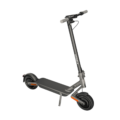  |



